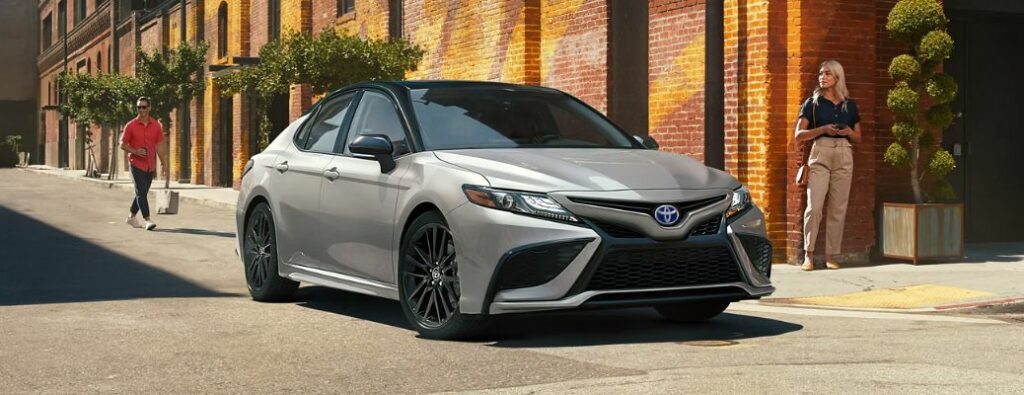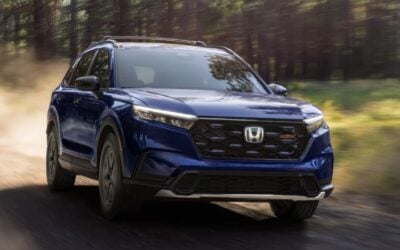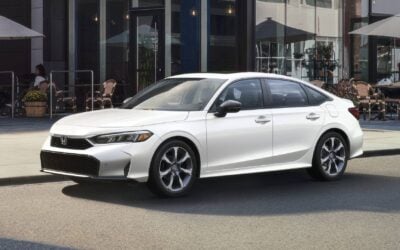Have you ever wondered how much dealers pay for used cars? As if buying a car wasn’t tricky enough, the used car market is somehow even more mysterious than the new car market. As I always like to say, “no two used cars are the same,” and for that very reason, used car pricing is not an exact science.
Unlike new vehicles, used cars don’t have a Manufacturer’s Suggested Retail Price (MSRP), nor a Monroney label that tells you exactly how much each component of the vehicle costs (or at least should cost). When you buy a used car, the price is generally set by a computer algorithm that looks at what other dealers have listed similar used cars for sale, and then suggests an amount to the dealer.
Like I’ve talked about in the past, as a general rule of thumb, dealers mark up their used car inventory a few thousand dollars over their cost. This is far from a hard and fast rule however, as some used cars have been known to net dealers five figures (or more) in profit.
Today I want to focus on a technique you can use to estimate a dealer’s cost to own a particular used car. Let’s dive in!
How do car dealers source used car inventory?
Before we get too into the weeds on how much dealers pay for used cars, I want to take a moment to share with you the four ways car dealers source their used car inventory. By this point you are familiar with the concept of a Used Car Manager. This is the staff member who is responsible for all used car sales at a dealership. They’ll source their inventory from four places:
- Customer trade-in
- Wholesale auctions
- Direct from wholesalers
- Trades with other dealers
The two primary sources are customer trade-ins and wholesale dealer auctions. Some dealers also get used cars directly from wholesalers, and occasionally dealerships have been known to “swap” aging units from one store to another to see if the other dealer has better luck selling the car.
For our purposes we’ll be focusing on estimating how much dealers pay for used cars from trade-in and auctions, since those are the two highest volume sources of inventory.
What are dealer costs for used cars?
There are certain costs associated with preparing a used vehicle for sale, aka getting it “retail ready.” Some costs are only associated with used vehicles purchased at auction, and don’t apply to trade-ins, but other costs are fixed, regardless of where they were sourced.
State inspection fee
Every vehicle a dealer sells must pass the state’s vehicle worthiness inspection. Fees associated with this inspection are non negotiable and differ from state to state. You can look up what a state inspection costs in your state to get an idea of what it costs a dealer, but on average we can say it’s around $80 per vehicle.
Reconditioning fee
Every used vehicle incurs some sort of reconditioning. Reconditioning is industry jargon for repairs and maintenance. Nearly all dealerships perform some type of reconditioning because it allows them to sell the vehicle at a higher price than if they sold it entirely “as is.” Dealers also like reconditioning their vehicles, because they are able to increase their revenues. What do I mean?
As a round number you can estimate with, a dealer will spend $1,500 (and sometimes a lot more) to recondition a used vehicle.
Detail fee
Dealers also must pay for a full detail of a used car before selling it. This typically is billed at $100 (or more) for a used car.
Auction fee
As the name suggests, this fee is associated with vehicles purchased at dealer auctions. Although each auction house charges a different price, a general rule of thumb is that a used car costs around $400 to buy from an auction.
Transportation fee
When a dealer buys a used car in a different region, they need to pay a transporter to get the vehicle back to their storefront. This amount varies widely, and will change depending on the number of vehicles being shipped and the distance traveled.
How Much Do Dealers Pay for Used Cars? Let’s Run Through an Example

Let’s walk through an example of how you can calculate an estimate as to how much a dealer paid for a used car. We’ll use a 2022 Toyota Camry LE listed for $15,995 to start. Get ready, you’re about to have a much better understanding of how much dealer pay for used cars.
The first thing you’ll want to do is locate the Kelley Blue Book trade-in value. Simply go to KBB, enter the vehicle information, and identify the low-end number they show.
In this case, the value is $14,791.00. Now, that’s not the actual price the dealer paid to get this car. If they sourced this car via a trade-in it’s likely they offered $13,000, or maybe $13,500. However if the dealer bought it at auction it’s likely it was 10% less than the KBB suggested value.
If the dealer bought this car at auction for $12,000, they then incurred $400 in auction fees, and $300 to transport it to their dealership. Add in $80 for the state inspection, and a conservative $1,500 in reconditioning work, plus $100 for the detail.
We’re up to $13,791.90 in cost for the dealer.
There is then one other factor we need to consider, which is called protected against commission (PAC). PAC is profit built into every car deal that is not commissionable to a salesperson. Dealers add in at least $500 in PAC on used cars, some more. This goes towards paying for non-revenue producing employees.
Now we are up to $14,291.90 in cost for this Camry LE that is listed for sale at $15,995.
If the vehicle was traded-in rather than bought at auction we can estimate that the dealer paid $14,971.00 to get it retail ready. As you can see, not a lot of margin is built into this price.
Free Car Buying Help Is Here
Tired of navigating the used car market and dealership hassles? We’re glad you found us! I’d like to share some free car buying tools with you.

Ready to outsmart the dealerships? Download your 100% free car buying cheat sheets today. From negotiating a deal to leasing a car the smart way, it’s all available for instant download. Get your cheat sheets today!













I’ve heard that dealers never sell their own trade-ins because they don’t want their customers coming back to bring their new car in for service or something, and seeing their old car for sale on the lot for way more than the trade-in allowance they got. It sounds like you’re saying that’s not true?
Eric, Zach Shefska here. I’m not sure who told you that dealerships don’t sell their trade-ins, because that couldn’t be further from the truth. Trade-in used car sales are lucrative for the dealer since they don’t have to pay transportation fees, or auction fees.
I feel like the dealer selling the car I want is over valuing the vehicle. For one, I pointed out that they had mistakenly listed it as an Automatic, whereas it’s a manual, and so when he reran the ‘wholesale’ price check, it dropped from $12,995 to $12,071.
On top of that, it’s had an undeclared accident (Carfax is clean) resulting in a poor paint job on the replacement bumper and some other minor issues (no structural issues though).
He also told me that they acquired the car through a repo from somebody local who couldn’t maintain his payments so there have been no transport/acquisition fees.
They still have the price advertised as $12995 – what’s my best tactic for negotiating this down to closer to $10k?
I mainly want to get my license to buy a 2010-2015 BMW 640i used and at very good price. I know mileage plays a big part in the price. But I have a few questions. 1. Should I get the wholesale or retail license if I plan on keeping it for myself. 2. Is it illegal if I buy it wholesale and just keep it for myself. If I get a preapproved loan from my bank, with a check. Would that work in purchase at the auction? If it matters I’m in California.
Great insights on the dealer pricing! It’s surprising to see how much they actually pay for used cars compared to what we think. This information really helps in understanding the negotiation process better. Thanks for breaking it down!